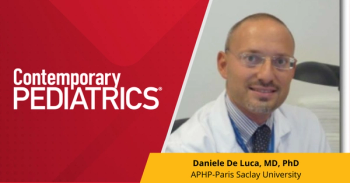
The "look" of Kawasaki may be different in young infants
Investigators demonstrated that Kawasaki disease (KD) in infants younger than 6 months does not have the same clinical and laboratory characteristics as KD in patients who are older than 6 months. The retrospective study was conducted at a hospital in Taiwan in 120 children who had been given a diagnosis of KD. Investigators divided the patients into two groups by age: Group 1 included the 20 patients younger than 6 months; Group 2 comprised the 100 patients older than 6 months. Both groups had more boys than girls. The study compared the two groups for clinical manifestations, laboratory results, echocardiographic findings, treatment, and outcome.
The incidence of major clinical manifestations of KD did not differ between the two groups. These manifestations include a high fever for more than five days, mucosal changes in the oropharynx, conjunctival injection, skin rash, extremities changes, and lymphadenopathy. In the only significant difference in minor clinical manifestations, 16% of the older children (Group 2) demonstrated gallbladder hydrops, compared with none in the younger group (Group 1). However, patients in Group 1 had, on average, a higher white blood cell count, platelet count, and triglyceride concentration and a lower hemoglobin value than did patients in Group 2. In addition, Group 1 patients had a higher incidence of coronary involvement and were more likely to have an incomplete presentation, late treatment with intravenous immunoglobulin, and a relatively poor outcome (Chang F-Y et al: Pediatr Infect Dis J 2006;25:241).
Commentary More than one third of children younger than 6 months in this study had incomplete Kawasaki disease (i.e., met fewer than four of five criteria). In those cases, the diagnosis was confirmed by echocardiographic evidence of coronary artery changes in the presence of prolonged fever. The authors recommend an echo study in infants younger than 6 months who have prolonged, unexplained fever. The 2004 American Heart Association guideline on Kawasaki disease makes a similar recommendation (Newburger JW et al: Pediatrics 2004;114:1708).
Newsletter
Access practical, evidence-based guidance to support better care for our youngest patients. Join our email list for the latest clinical updates.








